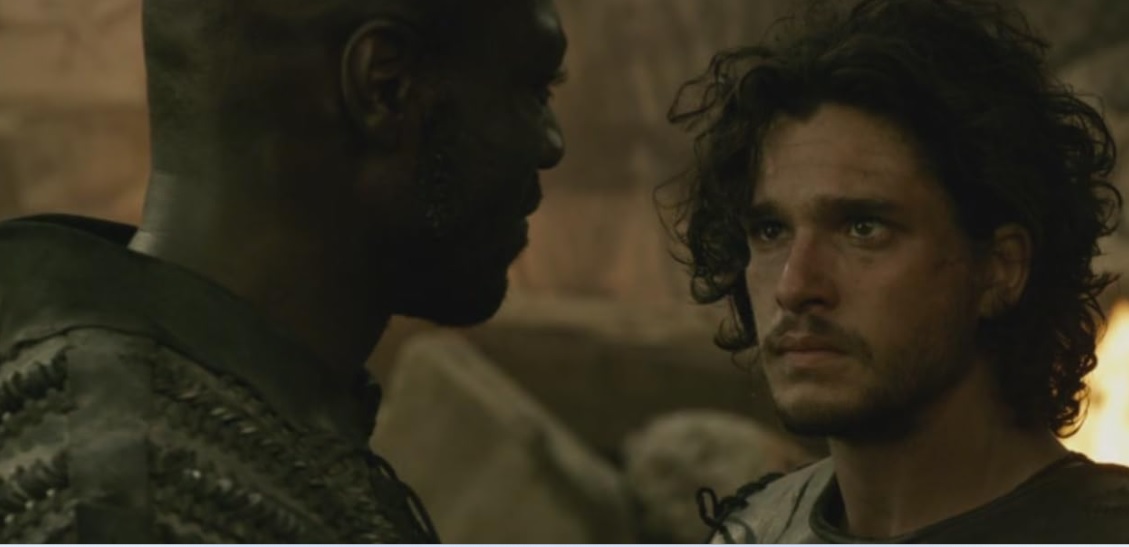There’s plenty of action in the cinematic world of ‘Resident Evil’ film series director Paul W.S. Anderson, and the fact is glaringly depicted in ‘Pompeii.’ The historical action drama film tries to capture the devastating impact the eruption of Mount Vesuvius had in 79 AD on the ancient Roman city, destroying it completely. It follows the story of an enslaved gladiator known as The Celt, the last of his kind, who finds the love of his life and the man who wiped out his entire village in the bustling city of Pompeii. Recognized globally as Jon Snow from the popular fantasy drama series ‘Game of Thrones,’ Kit Harington fits effortlessly into the role of the tortured lead Milo.
The narrative is equally supported by the villain Corvus (Kiefer Sutherland) and the noblewoman Cassia (Emily Browning) he falls in love with over their mutual love for horses. Any historical drama of this kind usually creates a storm after its release, with endless debates about factual inconsistencies. The 2014 film suffered a similar fate but was better received for its accurate depiction of the ancient Roman city. Portraying wars and volcanic eruptions while ensuring great attention to detail is never easy, which makes the visual spectacle much more interesting.
Pompeii Filming Locations
‘Pompeii’ was filmed primarily in the province of Ontario, specifically in Toronto. Some shots set in the exteriors were captured in Pompeii itself, in Campania, Italy. Principal photography began on March 13, 2013, and wrapped up in a few months on July 12, 2013. The epic Paul W.S. Anderson directorial is mostly a combination of digital effects, set pieces, and actual footage from the locations. But there’s more, so let us help you with the specific locations that can be spotted in the disaster film.
Toronto, Ontario
Anderson masterfully managed to capture the feel of Pompeii in the sprawling metropolis of Toronto in Ontario. With the help of an amphitheater and green screens, the production team worked out of Cinespace Film Studios at 777 Kipling Avenue in the Etobicoke area of Toronto. However, the movie relies more on real sets rather than green screens. To create a proper ancient Roman setting, Anderson was unable to find any existing sets that could be used for this movie. Apart from the amphitheater at the studio, a Roman legion encampment was built, along with the city gates and the arena as part of the sets.
In an interview with The Toronto Star, Anderson elaborated on the decision to recreate the ancient city at a film set. “We’ve built everything from scratch because there is no existing Roman architecture anywhere in the world that’s appropriate to use. We need the look of Pompeii before and after the disaster. During the volcanic eruption it’s also great to have everything on stage for the controllability of falling ash, pumice and cinders.” It’s also fascinating to know that the gladiator arena was only partially built, with the rest being expanded with the help of digital effects to make it look grander.
The award-winning visual effects company, Mr. X, took care of the VFX aspect of the film. In the same interview, the studio’s Founder and CEO, Dennis Berardi, shed some light on the challenges they faced during the production process. “The challenge on this film is to strike the right mix of a great art department, set construction and digital effects to create a believable world that is 79 AD. We have two big challenges: giving the movie scope with wide exteriors to show Pompeii in all its glory, and the cataclysmic explosion that unfurls in the third act.”
The team developed “fluid dynamics and simulation technology” and spent a “disproportionate amount of time, resources and focus on the disaster.” To ensure a smooth and functioning execution, they “also created a full digital version of Pompeii that Paul and I can treat like a digital set.” Interestingly, Kit Harington also revealed that he only visited Pompeii after shooting the film and was impressed by how accurately the film captured the real place. Apart from the shots at the studio, the gripping opening scene where Milo’s entire Celtic village is slaughtered by the Romans was shot a little outside the city to get the look of a village.
Anderson’s intention with the real sets had a lot to do with getting a look that seemed as authentic as possible and for the audience to get the proper feel of being in Pompeii. Anderson decided to film in Toronto largely due to diverse visually appealing locations and also since he feels it’s a very “film-friendly” location to work in. Talking about it, the filmmaker said, “I’m impressed not only with the look of Toronto but also with the technical assistance we are given and the relative ease with which we are allowed to film. It’s a very film-friendly city with good crew and a diverse look. It’s an exciting place to shoot.”
Pompeii, Italy
While most of the film was shot in Toronto, the producers went to the area surrounding the ancient Roman city of Pompeii in southern Italy’s Campania region for a few days to get accurate shots of the location. In the titular city, they captured the actual base of the mountain, and the real frozen bodies, which was later amplified during the editing process. These shots of the real location were interestingly taken much before the filming began to capture the real essence of Pompeii and get help with the set pieces that needed to be created. Movies like ‘The Riddle of Pompeii’ and ‘Pink Floyd: Live at Pompeii’ have also been shot at the location.

